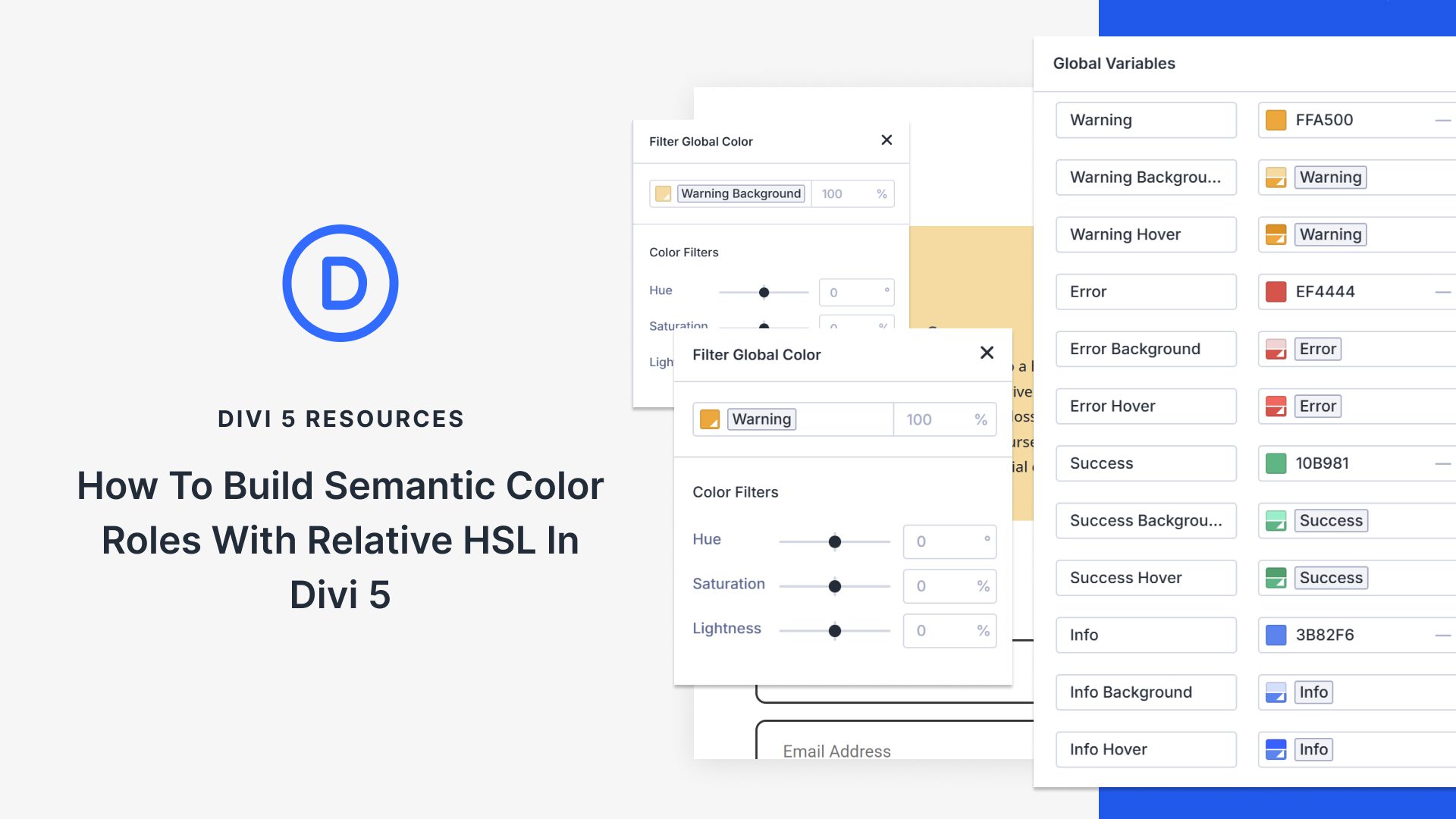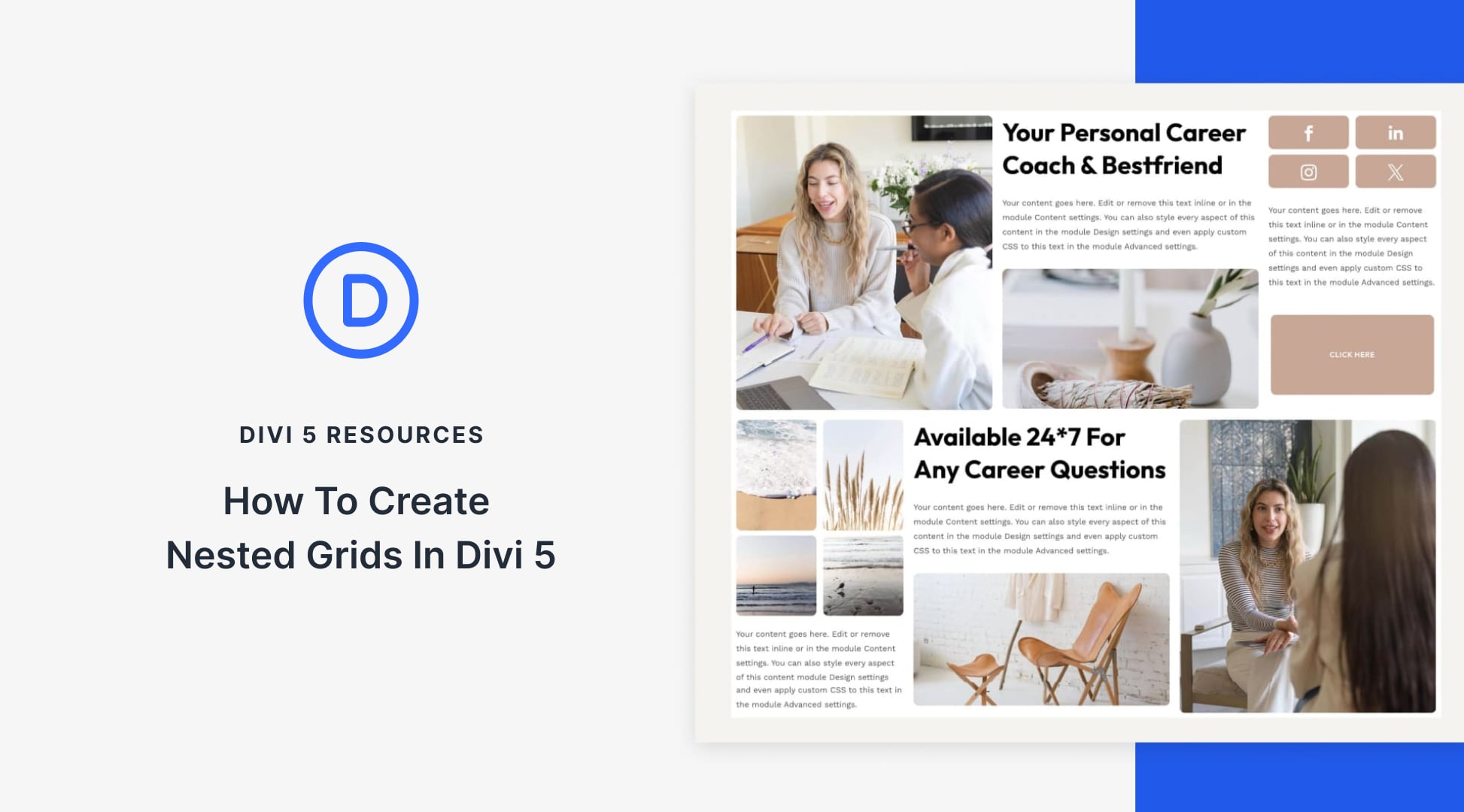Welcome to Part 2 of 4 of our mini series Divi Website Design Pricing where we’re exploring effective Divi website price ranges and providing some actionable ideas on how to price your web design services.
In yesterday’s post, we explored some average price ranges for small and large Divi web design builds. It is however, still up to you to figure out how much you want to charge for YOUR particular web design services. Figuring out your pricing is still largely dependent on all the variables of the project to ensure a profitable web design experience for you and a good ROI (Return On Investment) for your client. In this post, we’re going over some tactics and strategies that will help you determine your ideal price point!
Let’s get into it.
Deciding How Much to Charge for Your Divi Web Design Services
Ultimately, your prices have to work for 3 things:
- Your Business – your prices have to work for your business with all the the extra expenses in mind. Things like taxes, subscriptions to tools and plugins, administrative software, merchant account transaction fees, office space overhead, etc, all need to be factored in when it comes to how much you charge. When I send an invoice out for $2,000, I know I’m not pocketing all of that and I have to make sure that my prices are setting me up for a profitable experience.
- Your Lifestyle – your prices have to work for your lifestyle. When I started my web design business, I was single and had low rent. I was also inexperienced and wasn’t nearly as valuable as I am now so my prices were lower and rightfully so. As I gained experience and life progressed, so did my rates. Now, with a wife, a mortgage, bills and a golden retriever that needs constant grooming, my prices need to support not only my business but my lifestyle.
- Your Clients – your prices have to work for your clients. This is a little more tricky because different clients have different pain points on cost and some are willing to invest more than others. When you raise your rates, it’s possible that you’ll weed out some of the low balling, cheap clients. But you might also lose some of your good, quality clients. Ideally, as you grow and progress as a Divi Web Designer, you’ll be more valuable and will attract better clients but it’s important to be flexible to your good clients and their realistic advertising and marketing budgets as well. My ideal clients are small to medium size businesses that are willing to invest 3K-6K in a website build but I’m not quick to dish off smaller clients who have a more limited budget because sometimes, that’ll lead to a very fruitful relationship and often leads to referrals to bigger clients. And if an ideal client can’t afford my initial proposal, I’ll often trim some services off the initial build or create a “phase I” option for the client so they can approach the project one phase at a time.
With those 3 things in mind, let’s explore some ways that will help you figure out how much you should be charging!
1) Set an Income Goal – Annually, Monthly & Weekly

I recommend setting a yearly goal of what you’d like to bring in with your Divi web design business, then divide that by the number of months and sites you’ll need to hit that goal.
For example, if you want to make $50,000/yr, that’s $4,167 per month, $1,042 per week. So you can either plan on completing a $3,000 and a $1,000 website on average every month, or 2-$2,000 sites, or 4-$1,000 dollar sites, etc. Though you can’t easily plan out what size projects and clients will come your way, you’ll at least have a goal that you can check quarterly or so to make sure your price point and number of completed projects are lining up with your financial goals.
I’m fortunate that I usually have a steady stream of small to large size projects month to month but occasionally I’ll find myself working on 4 smaller sites, or 1 or 2 larger sites month to month. It all seems to even out as you go further into your web design career. With my maintenance/security plan, I also have passive income coming in month to month that helps me hit my goals. Having an income goal for your web design services is important for designers at every level!
2) Figuring Out Your Hourly Rate

The method above can also be used to help figure out your ideal hourly rate. So, if you want to hit around 50K/yr and work on average 40 hours a week, divide $1,042 by 40 and that’s your hourly rate. In this case, your rate should be between $25-$30 per hour. But keep in mind that when you own our own Divi Web Design business, not hours will be technically “profitable.” You’ll have meetings, calls, administrative time, time for learning new plugins and tools and marketing your business – this is all time that is generally not paying the bills and need to be factored in when thinking about your hourly rate. I’d plan on about 25-30 hours a week of actually money-making hours. So you may consider bumping up your hourly rate by 20-30% depending on how often you’re doing hourly work to compensate for those hours that aren’t paying the bills but are none the less needed.
In the next post, we’ll explore this in more detail as a way to charge for full web design projects but I typically charge by a fixed rate. I only use my hourly rate for quick or one off work for my clients. A fixed project rate allows me to make potentially 3 or 4 times what I might make for my hourly rate if I design the site that much faster. But regardless, figuring out your hourly rate is a great measuring stick to use for either full website builds or one off projects and quick work to make sure you’re lining up with your financial goals.
Side note: web design hourly rates (at least in my area and throughout the U.S.) average $25-$45 on the low end and $75-$150 on the higher end. That should be some incentive to keep on becoming more and more valuable to get to the higher end of that spectrum!
3) Research Average Web Design Prices in your Area

As mentioned in the first post, I reside in Columbus, Ohio, which is not a massive city, but is not small by any means. Therefore, my clientele are within a large spectrum of what they’re willing to pay for my services. Web design here might not be as expensive on average compared to places like L.A., Chicago, New York, etc, but it’s certainly not on the lower end either. Some clients can and expect to pay higher end prices for web design services and some are frightened by even my lower end price ranges. I’ve found a pretty healthy spot in the mid to upper middle range of the web design pricing scale.
Depending on where you are, you may consider reaching out to some of your competitors and colleagues to see what they’re charging. Some companies will even offer a general online quote estimator that you can try out. Getting a pulse on what’s considered “cheap” or “expensive” in your area and in your ideal clientele’s industry is the best place to start when figuring out your pricing structure. You can often search online for yearly estimates on web design cost in your area as well.
The economy in my area is booming so average rates will likely tick up. I want to make sure I’m staying affordable for my ideal clients but am also not scrapping the bottom of the barrel with my price point either.
4) Get to Know your Client and Their Industry

A few years ago, I had 2 proposals go out in the same day. One project, I quoted for $5,000 dollars. The other project, which wasn’t as big but would still have been a decent amount of custom work and integration, was quoted at $1,950. One client gave me the green light with no push back and no problem. The other, the smaller quote, emailed me offended and upset that I would propose such a high price. The more expensive project was for a medical group, the lesser was for a local musician.
I knew of course that an established medical business would have more to invest in a new website compared to a local musician. Though I certainly didn’t expect a rude response from that person 🙂 Needless to say, the medical group moved forward with no problem but the musician did not. And I wasn’t willing to budge on my already discounted rate for that kind of “nightmare client.” But my point is that you may need to adjust your pricing and cater it to the client, their industry and what works for them. As long as you’re still maintaining a profitable business.
One popular web design business model is to pursue a particular industry and cater services just to businesses in that niche industry. I find this method to be a bit limiting and personally, I don’t know anyone who has a successful web design company for just one industry but the mindset of finding and attracting your “ideal” client is very valuable. For me, small businesses or shops with a $300 budget are not ideal and on the flip-side, neither are big companies wanting a massive online build that’s better catered to a large team or agency. So, I recommend getting to know your ideal clients and research what’s working for them and what they might expect.
In Closing
Well I hope these ideas have helped you in determining or re-evaluating your prices for your Divi Web Design Business! One thing to remember is that your pricing should directly parallel the value you bring to your clients and your expertise with Divi and WordPress. As you grow and become more valuable, so should your rate! And your pricing should work for your business, your lifestyle and your clients. Please refer back to our general pricing guide if you’d like to get more ideas on pricing your custom or more turnkey web design solutions.
Did this post help you in figuring out your ideal price point? I’d love to hear your thoughts in the comments below!
Tomorrow – 5 Pricing Model Options for Your Divi Web Design Business

Once you know the average price range of web design services in your area and have decided how much you want to charge for your services, it’s time to choose a pricing model and figure out how you want to go about charging clients. Come back tomorrow as we discuss some different pricing options that you can explore for your Divi Web Design business!
Be sure to subscribe to our email newsletter and YouTube channel so that you never miss a big announcement, useful tip, or Divi freebie!













Thanks sir
Great idea this give me a new way to deal with my web clients and get few more
…..
Awesome to hear! Thanks for the feedback, Sajid.
Thanks Josh! I am just starting out (buidling my website today actually) and I am trying to decide how to price. I am actually going to start with a niche geared towards churches because I am a man of faith and they desperately need good work. Unfortunately, I know going into it that they will not be able or willing to pay enough to cover the cost of the project that I would normally charge. I eventually want to start a second company geared towards businesses, but I cannot decide whether to go with a general name or brand it with my name.
1. What are your thoughts on this?
2. How should I price when starting out? Per hour or per project?
3. Any advice or tips you wish you had known before starting out?
Thanks again Josh, I am reading your other articles and looking forward to tomorrow.
Roy
Hey Roy,
First, I’d recommend checking out Part 3 of this series as I go into some pricing models that I think will really help you out. It’s tough because there’s no right or wrong way to go. If you brand your site as your name, it’ll feel more personal. But companies may be leary about working with a one man shop. But that hasn’t been an issue in my case because people are starving for personalized services where they don’t feel like a number. Though having a business name/brand is great for scaling if you wish to build a team and utilize more designers. You’re welcome to check out my site at intransitstudios.com if that gives you any inspiration or ideas on setting yours up!
Also, I’d be more prone to keeping things under one roof and offering services separately for churches/companies so you don’t have to essentially run 2 different companies. But on the other hand, if it goes well and starts to scale, you could always split them off to provide separate price points for churches and companies. Hope that helps!
Great article! Useful information! I will rethink my strategy!
Thanks for your awesome feedback, Jordan!
Thank for the article its give me a good idea to charge my web development clients and to get engagements with some new clients
Awesome to hear, Vironica! Thanks for your feedback. I hope the whole series continues to help you out!
I am glad to read this at least i am not alone in that era
BTW nice article
thanks
Thanks, Stella! Yep – you are not alone 🙂
good job hard work
Thank you, Harpreet!
Hello Josh,
Thanks for your interesting posts. I wonder how you manage to build websites and write so many blog posts and answersering comments at the same time… 🙂
I have a question about invoices. When do you send the invoice for a website to the client? Till now I send an invoice of half of the total amount at the start of a project and the second half when a site goes live. But sometimes it takes a while a website goes live because I have to wait for the client to deliver content. So I was just thinking yesterday maybe I should do that differently.
Hi Sandra,
Ah yes, managing everything from website builds, to admin work, to blogging and comments, etc is a never-ending struggle 🙂 But I have some systems in place that really help me stay on top of everything. Mainly, I try and stick to a daily routine to help manage everything. I explore that in full detail in this post if you’d like to check it out: intransitstudios.com/routines-tips-tricks-help-run-business/
I bill out very similar to you. Typically 50% up front and 50% upon completion. Sometimes I’ll do 30%, 30%, 40% if it’s a bigger project or if the client requests it. And depending on the client, I either require payment before going live (once they sign off on the new site) or more often than not, I go live and send final invoice. I haven’t run into any billing issues in years thankfully. I try to weed out shady or bad fit clients. Part 3 in the series will actually go over some pricing models that might help you out as well. Hope that helps!
Thanks for sharing Josh. Very appreciated indeed. I’m launching a small web business and lots of question come up every day. You bring practical answers and that’s very kind of you. Thanks again 🙂
That’s so awesome to hear, Pascal! I really appreciate that feedback. This series was primarily meant for someone just in your position. I know how hard it can be to figure out some of these tough questions and wish I would’ve had more advice when I got started!
Very nice content!
Thanks a lot for that.
Thanks, Ricardo! Glad it helped.
Solid information Josh, well done! I try to keep abreast of what other web developers are charging in my area and then see if I can come in slightly under them without giving away too much. You article was a nice affirmation.
Thanks, Chris! I’m glad to hear I’m not alone in that as well 🙂
Solid information Josh, well done! I try to keep abreast of what other web developers are charging in my area and then see if I can come in slightly under them without giving away too much. Your article was a nice affirmation.
Thanks for this article. It has given me good insight on the price I charge for my web design business. I was always weary of what to charge my clients since i’m using a CMS like Divi to build their website. However now I see that my work is more valuable than I thought it was. In the end Divi is like a framework and I put a lot of my own custom code into each client which gives a similar or same end result as some $10,000 custom coded websites. What do you think?
I’d completely agree with that, Andrew! I think it’s more valuable for the client because of the integrations, plugins and add-ons that can be utilized with Divi and WordPress. There’s not too many online problems I can’t solve for most businesses with Divi, WP and the collection of plugins and tools I have in my digital tool belt 🙂
I need this info!
Just starting my web design service
Glad this helped you out, Vick! Best of luck with getting everything started!
Thanks, great post
Thanks for your feedback, Alex!
This info is very useful as I do find it difficult sometimes to quote a client
Thanks for the feedback! Yeah I think that’s one of the biggest struggles we all face as web designers. I find that if I can get the quote to work for all 3 (my business, me and my client) then it’s a win, win all around!
What I would like to know is, where do you usually find clients, where do you send your quotes? Is it the freelance websites like Upwork, or somewhere else?
Here’s a link to a previous post I wrote on how I get the majority of my clients: https://www.elegantthemes.com/blog/divi-resources/how-to-start-getting-clients-for-your-divi-web-design-business
Hope that helps!